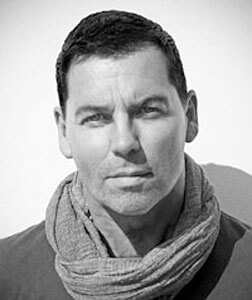Jonathan Chritchley is one of the foremost fine art photographers in the world today. His instantly recognizable work is seen around the world in exhibitions, galleries, magazines and books, and form part of many fine art collections internationally. His regular clients include Ralph Lauren, Hilton International, Fortuny and P&O Luxury Cruises. Jonathan also speaks and presents his work at photography and sailing events worldwide, and is the founder and owner of Capture Earth and Ocean Capture, two companies specializing in luxury photography workshops & tours.
Born in London, England, Jonathan became infatuated with the sea after moving to the famous sailing town of Lymington on the country's south coast at the age of 14. Years later, having moved to the South of France, he gave up a successful career as a marketing and brand director in order to return to his true passion; a combination of the sea and fine art photography. He has now worked in over 35 countries, including Mozambique, Japan, China, Cambodia, Chile, Greenland and South Africa.
Jonathan was named one of the 'Top 100 Photographers of All Time' by the Sunday Times. His first book, SILVER, a 136 page fine art art edition, was published in 2014, and in 2016 he was made a Fellow of the Royal Geographical Society (FRGS).
An active supporter of ocean conservation, Jonathan currently resides in the South of France with his wife and young family.
Source: www.jonathanchritchley.com
Jonathan Chritchley is a detail-obsessed perfectionist of black-and-white photography. Sections and details of his work allow us to delve into landscapes of the soul and are both relaxing and contemplative.
Natural beauty does not mean perfection: to him it means uniqueness. And accordingly his photographs look like visions of the unknown and new.
The atmosphere of his landscapes is not loud or spectacular but rather teases out a picturesque silence while playing with the power of nature, which he encounters in clearings in the forest, in the middle of the sea, or the panorama of a seascape.
He explores the scene with his camera like a hiker and captures forces of nature – a stormy collection of clouds and treetops bent by the winds, or the tautly pulled and suddenly billowing sails – in impressive images. We can truly inhale the landscape in Chritchley’s works – sense the wind, the cold, the distance, the resistance – because he has confronted them confidently and persistently with his camera.
Chritchley learned to sail as a boy on the south coast of England. He still preserves his excitement for the sport as well as sailing’s creativity and his inherent love of discovery, and he lives these actively in his photos. He abstractly choreographs the play of the wind in the sails. Billowing, cleverly cropped, sometimes full-bodied like a sculpture and momentarily rising to formidable heights, they can then in a split second give way in a windless sky. This creates an exciting scenario and offers aesthetic moments that fascinate more than just passionate sailors. He does not necessarily see himself as the “master of images” but rather as a curious observer of the canvas’s unpredictable moods.
As a globetrotter, Chritchley has been a guest not only on all continents but also on the pages of many magazines and in many galleries. His singular sailing portraits are known and loved internationally. The landscapes and sailing scenes specially selected for LUMAS attest to the photographer’s creative diversity, above all in the realm of abstraction.
Source: LUMAS
